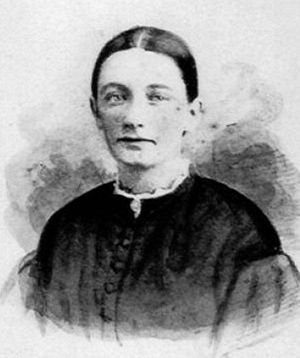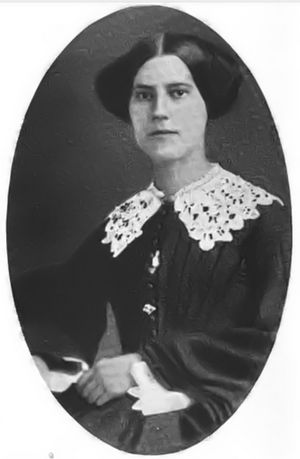Camp Letterman facts for kids
Quick facts for kids Camp Lettermaneponym: Dr Jonathan Letterman |
|
|---|---|
| Part of Army Medical Service | |
| George Wolf farm east of Gettysburg, Pennsylvania, near the York Pike |
|

Camp Letterman, August 1863
|
|
| Type | Union Army field hospital |
| Site history | |
| Built | 1863 |
| In use | 1863 |
Camp Letterman was a very important military hospital during the American Civil War. It was built near the Gettysburg Battlefield in July 1863. This hospital cared for over 14,000 Union soldiers and 6,800 Confederate soldiers. All these soldiers were wounded during the Battle of Gettysburg.
History of Camp Letterman
The Battle of Gettysburg was one of the biggest and most important fights of the American Civil War. It happened over three days in July 1863. The Union Army, led by Major-General George Meade, fought against the Confederate Army. The Confederate Army was led by Major-General Robert E. Lee.
The battle took place near Gettysburg, Pennsylvania. It included famous fights like Little Round Top and Pickett's Charge. The Union troops won this major battle. But it came at a high cost. More than 3,100 Union soldiers and 4,700 Confederate soldiers died. Many more were wounded: over 14,500 Union and 12,600 Confederate soldiers.
After the battle, the town of Gettysburg was overwhelmed. Farms, homes, and churches were used as makeshift hospitals. But there were too many wounded soldiers. Many had to be cared for outdoors in gardens. Union military leaders quickly realized they needed a much larger hospital.
So, they got approval to build a new general hospital. It was built after July 8, 1863, and opened on July 22. The hospital was named Camp Letterman. It honored Jonathan Letterman, M.D., who is called the "Father of Battlefield Medicine." He created new ways to manage medical care during battles. His ideas helped thousands of soldiers during the Civil War and later wars.
The hospital tents were set up east of Gettysburg. Union Army surgeons, nurses, and members of the U.S. Sanitary Commission worked there. They treated wounded soldiers from both sides of the war. They also prepared meals for the soldiers. Guards helped keep order among those who could walk. Soldiers who needed more advanced care were sent to bigger hospitals. These were in cities like Philadelphia, Baltimore, and Washington, D.C.
Dr. Henry Janes was the main doctor in charge of Camp Letterman.
On October 3, 1863, Dr. Jonathan Letterman wrote a report about the medical care during the Gettysburg Campaign. He explained the challenges of getting supplies and moving wounded soldiers. He had tried to create a better system for transporting wounded soldiers. But his plans were sometimes changed by others. This made it harder to get tents and other important supplies to the battlefield quickly.
Letterman's report also praised the medical officers. He said they worked day and night without much rest. They showed great skill and dedication. Some even fainted from exhaustion. Thirteen medical officers were wounded during the battle. One died from his injuries. This showed that medical officers were also in danger.
The ambulance corps also did an amazing job. Despite the huge number of wounded (over 14,000 Union and 6,800 Confederate), almost every wounded soldier was removed from the field by July 4. Ambulance workers even faced enemy fire while doing their duty.
By January 1864, Camp Letterman was no longer needed. The hospital was then closed. In June 2018, the Pennsylvania House of Representatives honored Camp Letterman. They passed a resolution to recognize its important role in treating the many wounded soldiers from the Battle of Gettysburg.
Women's Contributions at Camp Letterman
Many women played a vital role at Camp Letterman. Seven women served as nurses. Over 30 more women helped in other ways, making a total of about 40 women.
Two of the nurses, Sophronia Bucklin and Cornelia Hancock, shared their experiences. Cornelia Hancock said she and three other women worked in one of the hospital tents. Sophronia Bucklin described the nurses' simple living conditions. She slept on a bed with bare slats at first. She later got a straw mattress and pillow from the Sanitary Commission. But she often gave them to wounded soldiers who needed them more.
Bucklin also wrote about the heavy rains. Muddy water would flow through their tents. They sometimes had to use umbrella handles to find their shoes in the morning! Later, they got a tent cloth for a carpet and a stove to dry their clothes. She learned how little was truly needed to be comfortable.
Another nurse, Margaret Hamilton, cared for patients in the smallpox ward. Tillie Pierce, a teenager during the battle, also helped nurse wounded men at Camp Letterman. She later wrote a book about her experiences called At Gettysburg, or What A Girl Saw and Heard of the Battle: A True Narrative.
Rebecca Lane Pennypacker Price was another woman who helped. She was part of the Phoenixville Union Relief Society. She organized women to sew clothes for soldiers and collected donations. She also personally delivered supplies to troops. She later became a nurse in Union hospitals.
At Camp Letterman, she helped the ambulance corps. She comforted men waiting for transport or surgery. She also wrote letters for dying soldiers to send to their families. Doctors who knew her from other battlefields asked her to care for soldiers who were too badly wounded to survive. She provided end-of-life care to men from both sides of the conflict.

Anna Morris Holstein served as the matron-in-chief, overseeing many of the women's efforts.




